Patio Layout Patterns: Your Hardscape Design Guide
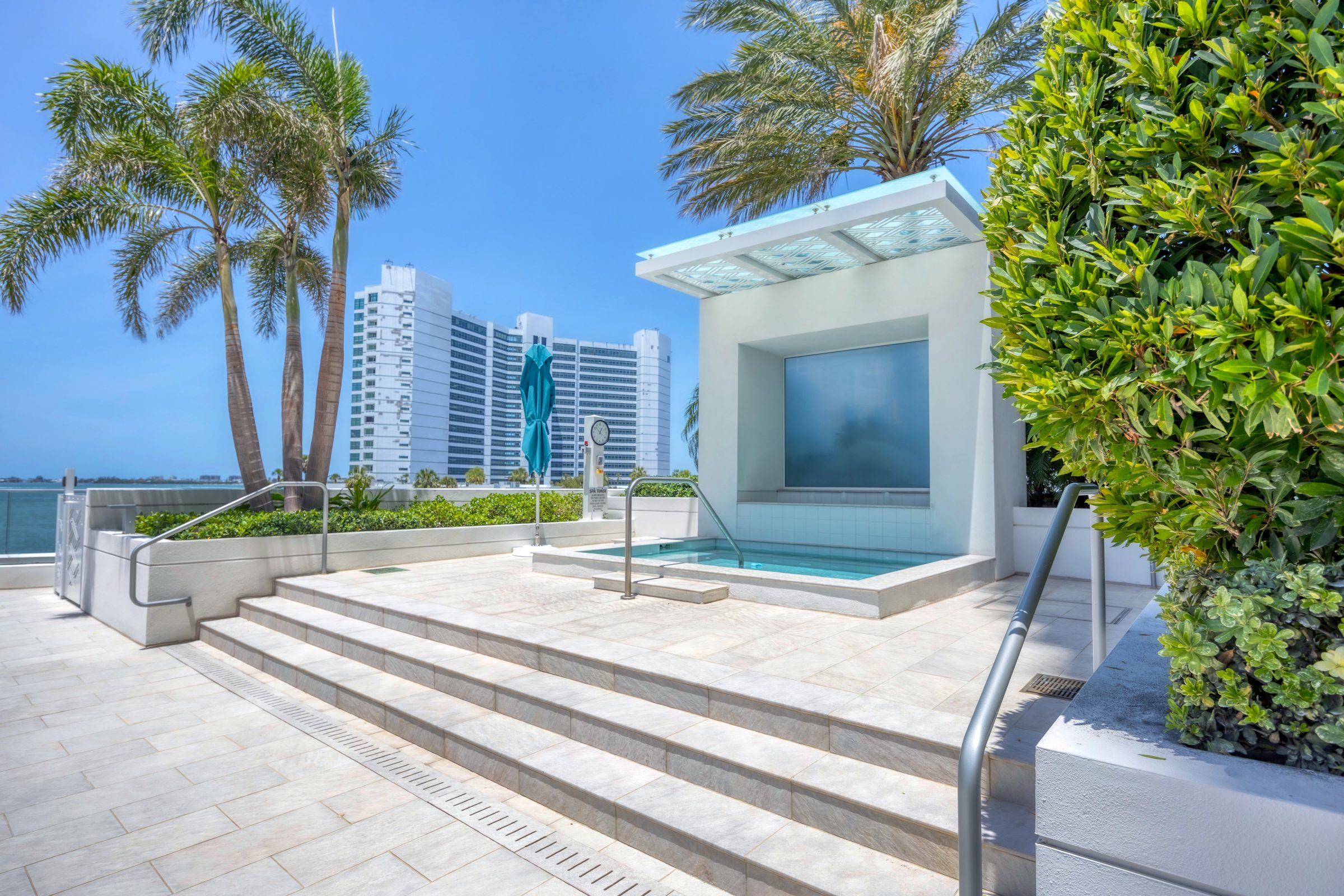
Are you struggling to settle on patio layout patterns that feel inviting and endure the weather? Too often, patios crack, collect water, or look awkward because of poor design and material choices. Without guidance, you might spend your budget on a hardscape that ages poorly or feels cramped.
We’ll walk you through the most useful patio layout patterns, comparing the best paver materials, explaining retaining wall design basics, and showing you how to plan hardscape drainage solutions. You’ll also see when permeable pavers make sense and how driveway pavers vs. concrete differ. Along the way, you’ll also discover the installation checklist and how Arbor Landscapes delivers dependable hardscape solutions.
What Are The Most Useful Patio Layout Patterns?
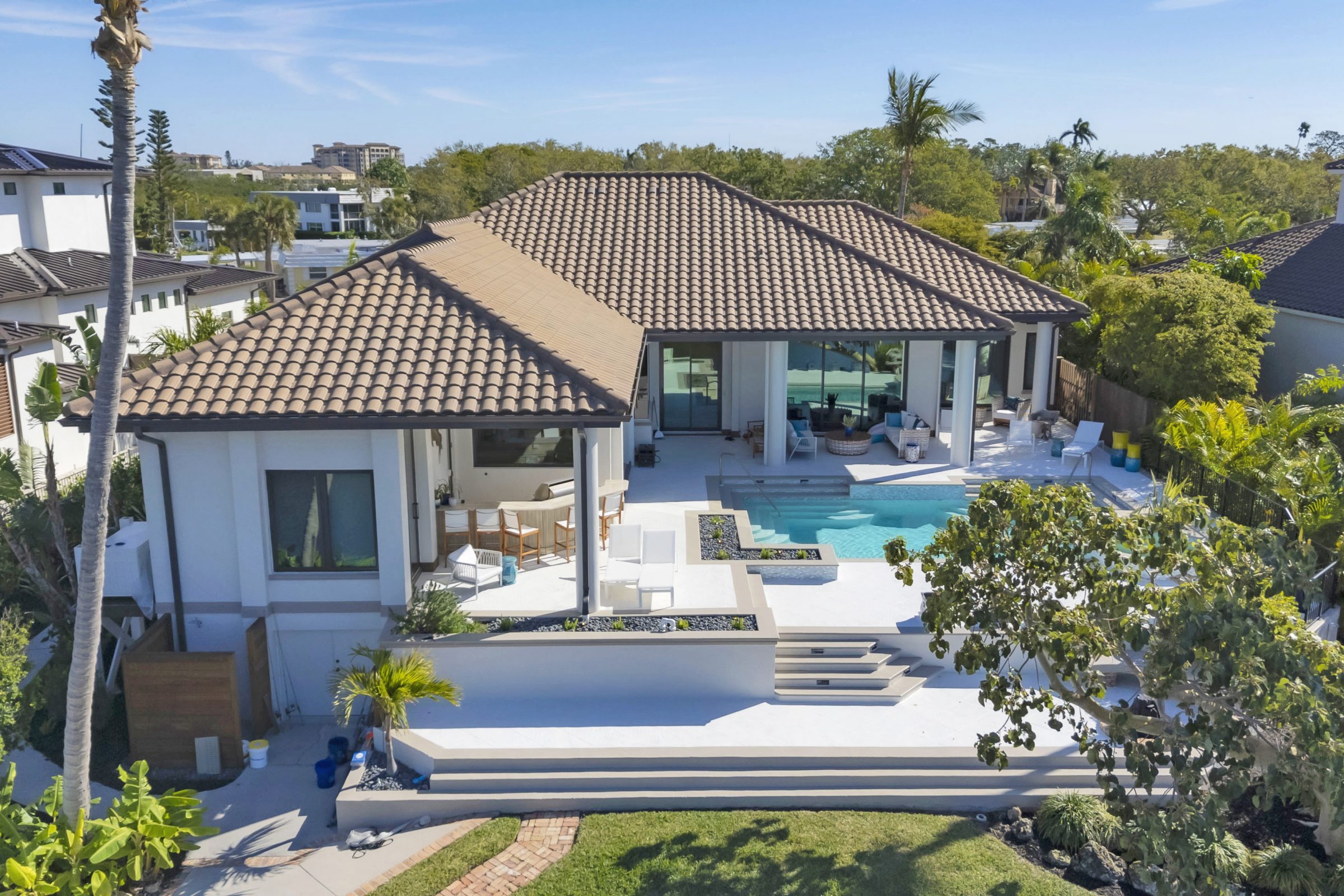
Patio layout patterns determine how your outdoor living space feels underfoot and how well it ages. The right arrangement can make a small area feel inviting or help a large patio look cohesive rather than empty. Patterns also affect installation time and waste. Two‑piece and three‑piece combinations remain popular because they balance visual interest with ease of installation.
- Two‑Piece Combinations: Using a large rectangle with a smaller square creates rhythm without being too busy. The larger units define the main surface, while the smaller ones fill gaps and add movement. This arrangement works well in mid‑sized patios where single‑size patterns might look repetitive.
- Three‑Piece Combinations: Adding a third size lets you extend the pattern to bigger patios. By rotating the stones or repeating a sequence, you avoid long straight joints that reduce structural strength.
- T‑Pattern Applications: A T‑pattern places rectangular pavers perpendicular to each other, forming “T” shapes across the surface. This design suits contemporary spaces and helps guide foot traffic toward key features such as a fire pit or dining area.
No matter the pattern, proportion matters. Larger pavers paired with tiny accents often look awkward, while similar sizes can feel cluttered. Choose paver sizes that relate to each other, approximately half or third dimensions, to maintain balance.
Where Do Herringbone Vs Running Bond Patterns Work Best?
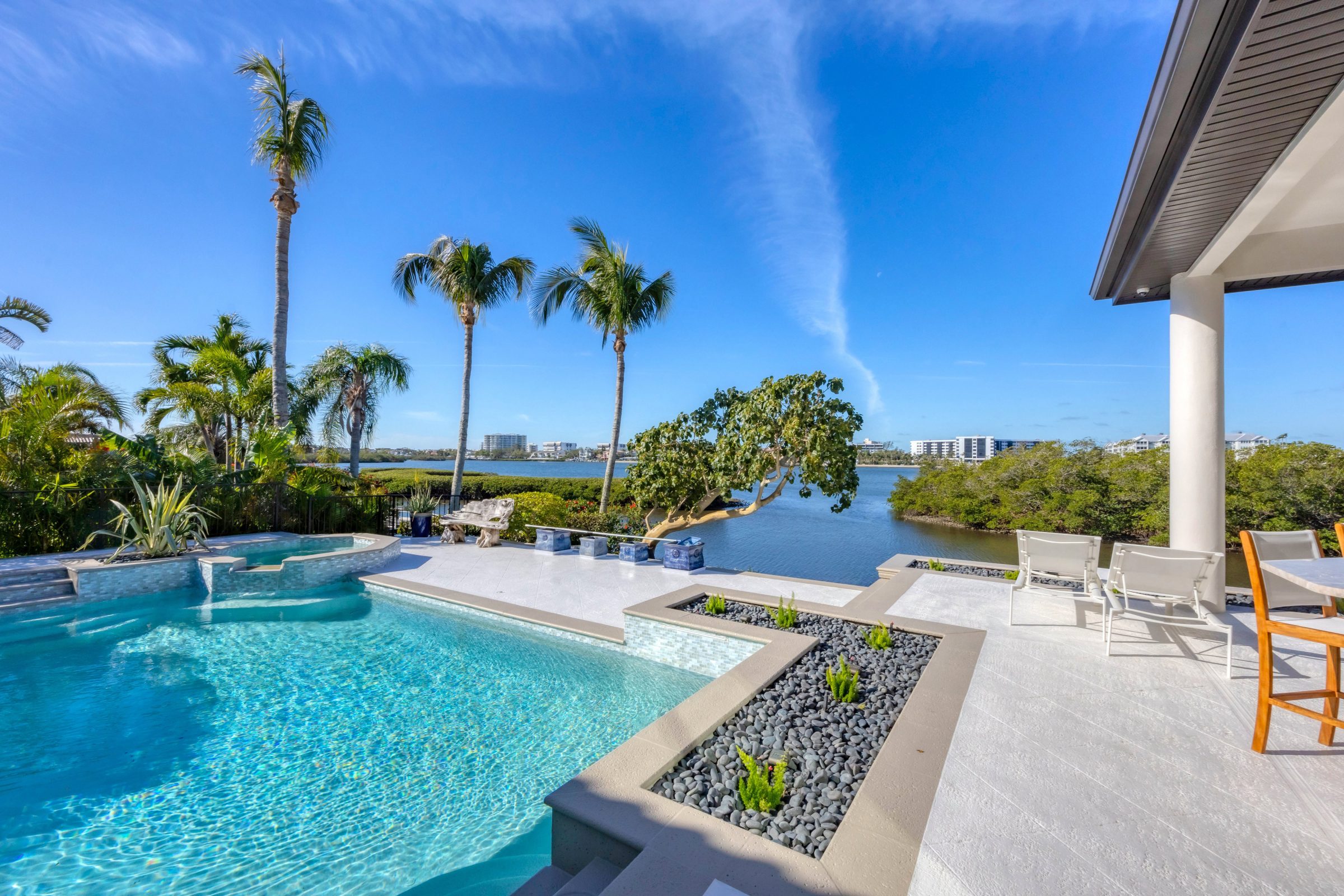
Herringbone and running bond patterns each have contexts where they shine. Your choice depends on how much traffic the space receives, the available paver sizes and the look you want to achieve.
The herringbone pattern uses rectangular pavers interlocking at 90° or 45°. This strong arrangement is often chosen for driveways and other high‑traffic areas. A 90° herringbone provides maximum load‑bearing strength, while a 45° layout adds dynamic movement that suits patios where aesthetics matter as much as strength.
The running bond pattern staggers the joints of each row, making it straightforward to install and visually appealing. It works well for walkways and smaller patios. For driveways, running the pattern across the width rather than down the length improves stability.
Material choice influences the pattern you select. Clay bricks naturally fit running bond because they are uniform and easy to offset. Concrete pavers and large format slabs are suitable for herringbone or modular patterns. Natural stone is often laid in random or asymmetrical layouts because of its irregular shapes.
Aligning the pattern with adjacent features can enhance your design. When your patio adjoins a retaining wall or long façade, parallel lines can make narrow spaces feel wider, while perpendicular lines draw the eye to the wall itself.
Which Paver Materials Suit Patios, Walks, Stairs, & Drives?
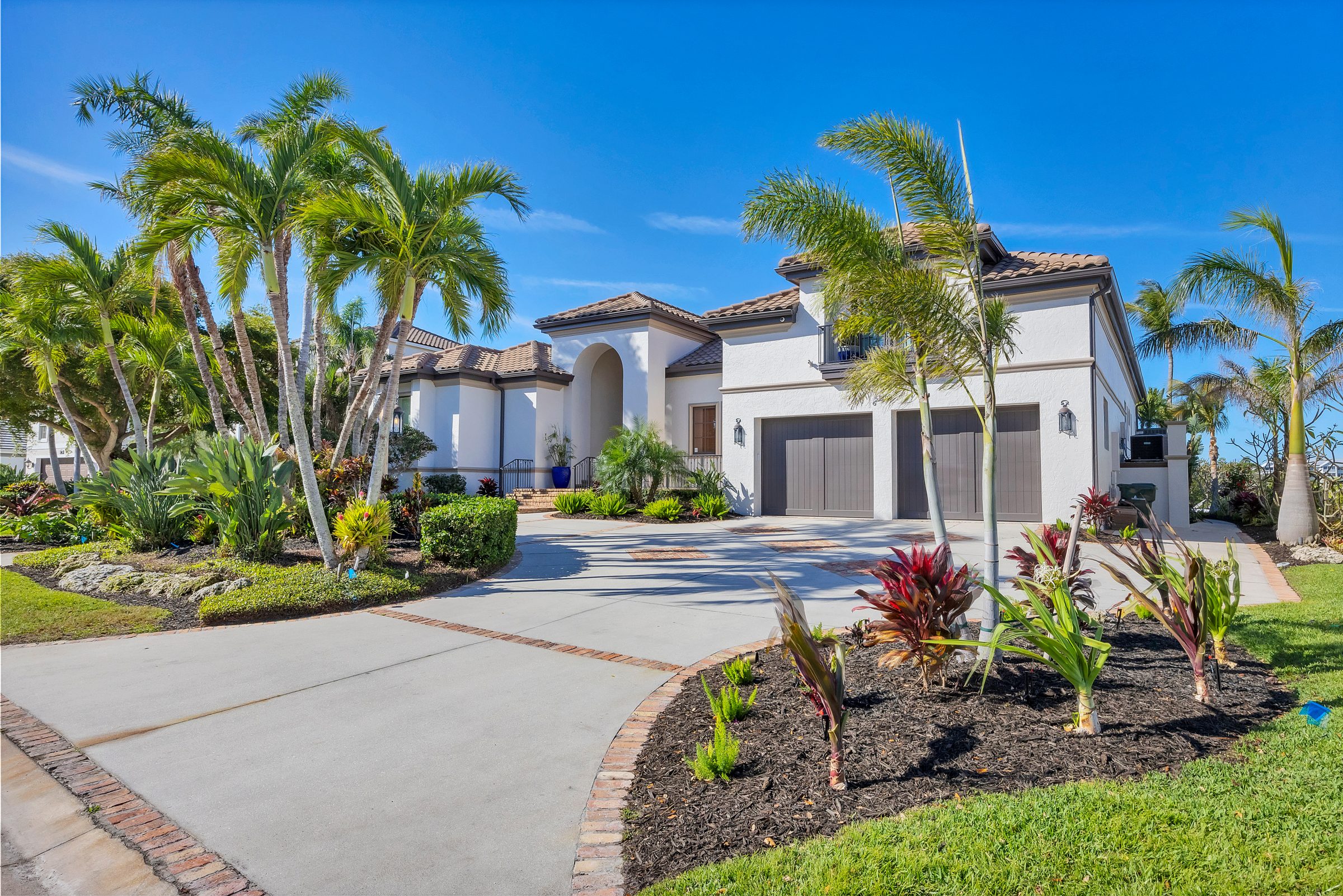
Choosing the best paver materials influences how your patio looks now and how it endures decades from now. Interlocking concrete pavers are a preferred option because of their strength, dimensional accuracy and variety of colors.
Belgard Paver Systems
Belgard manufactures concrete pavers with consistent color and dimension. These units are produced in a controlled environment and have compressive strengths around 8,000 psi; well above poured concrete. The controlled process limits water absorption to about five percent, making the pavers resistant to freeze‑thaw cycles. Such durability suits patios, walkways and driveways that experience heavy use.
Tremron Paver Collections
Tremron offers concrete and clay paver collections. Their pavers are known for warm colors and textured finishes. Concrete units provide comparable strength to Belgard products, while clay pavers deliver rich colors that do not fade. Their product range includes modular shapes for intricate patterns and large slabs for modern design.
Natural Stone Alternatives
Natural stone, such as granite, limestone, or slate, offers timeless beauty and unique character. However, stones vary in thickness and require more precise base preparation. Clay brick pavers share some of the stone’s charm and historically have been laid in running bond or herringbone patterns. While stone and brick often cost more and need careful installation, their appearance can enhance heritage properties.
Material selection depends on project needs:
- Driveways require high compressive strength and low absorption
- Walkways and steps benefit from slip‑resistant textures
- Pool decks need smooth surfaces that stay cool
- Interlocking concrete units meet these requirements effectively
What Are The Basics Of Retaining Wall Design?
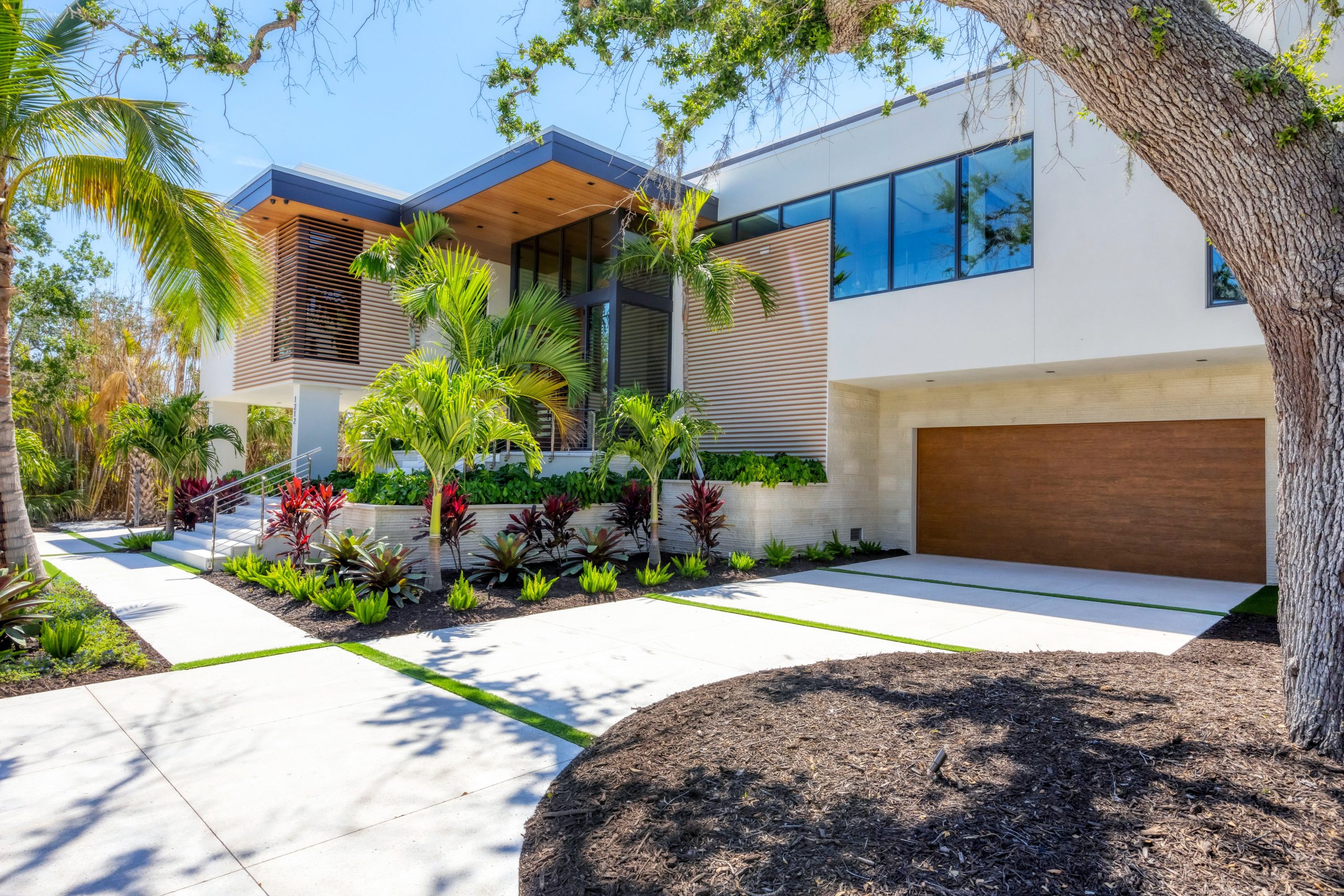
Retaining walls manage grade changes and create level terraces.
There are three fundamentals that determine structural integrity:
- Base preparation
- Batter (backward lean)
- Backfill
A solid base is critical. Western Interlock’s guide recommends excavating about 12 inches below grade to create a 6‑inch compacted gravel base and bury the first course of blocks. The base should be level and extend beyond the wall’s face. After excavation, gravel is laid in lifts and compacted to ensure density. Compacting in layers prevents the wall from settling unevenly.
Batter refers to the intentional backward lean that helps the wall resist soil pressure. Retaining walls should lean into the hill at least one inch for every 12 inches of height to maintain a safe load. This setback improves stability by directing forces down toward the base. Taller walls may require engineered systems or reinforcement.
Backfill and drainage complete the system. A perforated drain pipe laid at the rear of the wall collects water and directs it away. Behind the wall, free‑draining gravel prevents water accumulation; filter fabric separates gravel from native soil to stop fines from clogging the drain. Without proper drainage, trapped water expands and contracts in cold climates, pushing the wall forward and causing failure.
Material selection also plays an important role in both appearance and performance. Stacked block systems with caps provide a clean, modular look while locking each course together for added strength. For a more natural aesthetic, Oolite stone is a popular choice in coastal and tropical regions; its porous, light-colored composition blends seamlessly with lush landscapes while still performing well in retaining applications.
How Do You Plan Drainage For Hardscapes?

Surface and subsurface drainage protect your investment from water damage. A simple rule is to design surfaces with a gentle slope, 1–2 percent for patios and 2–5 percent for driveways, so water flows away from structures toward planting beds, lawns, or drains. Without slope, puddles form and accelerate deterioration.
For larger areas, swales provide a natural solution. A shallow swale is a vegetated channel that guides water across your yard and allows infiltration. Plant swales with grasses or perennials that tolerate both wet and dry conditions. When designed with curves, swales can become an attractive feature that blends into the landscape.
Where water must be captured and directed underground, inlets such as catch basins, trench drains, or NDS drainage boxes are installed. These devices collect runoff and connect to piping systems that move water to a safe discharge point. Corrugated pipes are often used in these systems because they’re flexible and reliable for navigating around obstacles. Downspout extensions can also be integrated to route roof runoff directly into the drainage network, reducing erosion and standing water near the foundation. To ensure effectiveness, always place inlets at the lowest points of your surfaces and connect them with a consistent slope to avoid standing water.
Subsurface drainage addresses water that seeps through pavers or penetrates the edges. For permeable paver systems, an open-graded base holds water temporarily before releasing it into the soil. For conventional pavers, a compacted and slightly crowned base ensures water moves toward drainage zones instead of pooling beneath the surface.
When Do Permeable Pavers Make Sense?
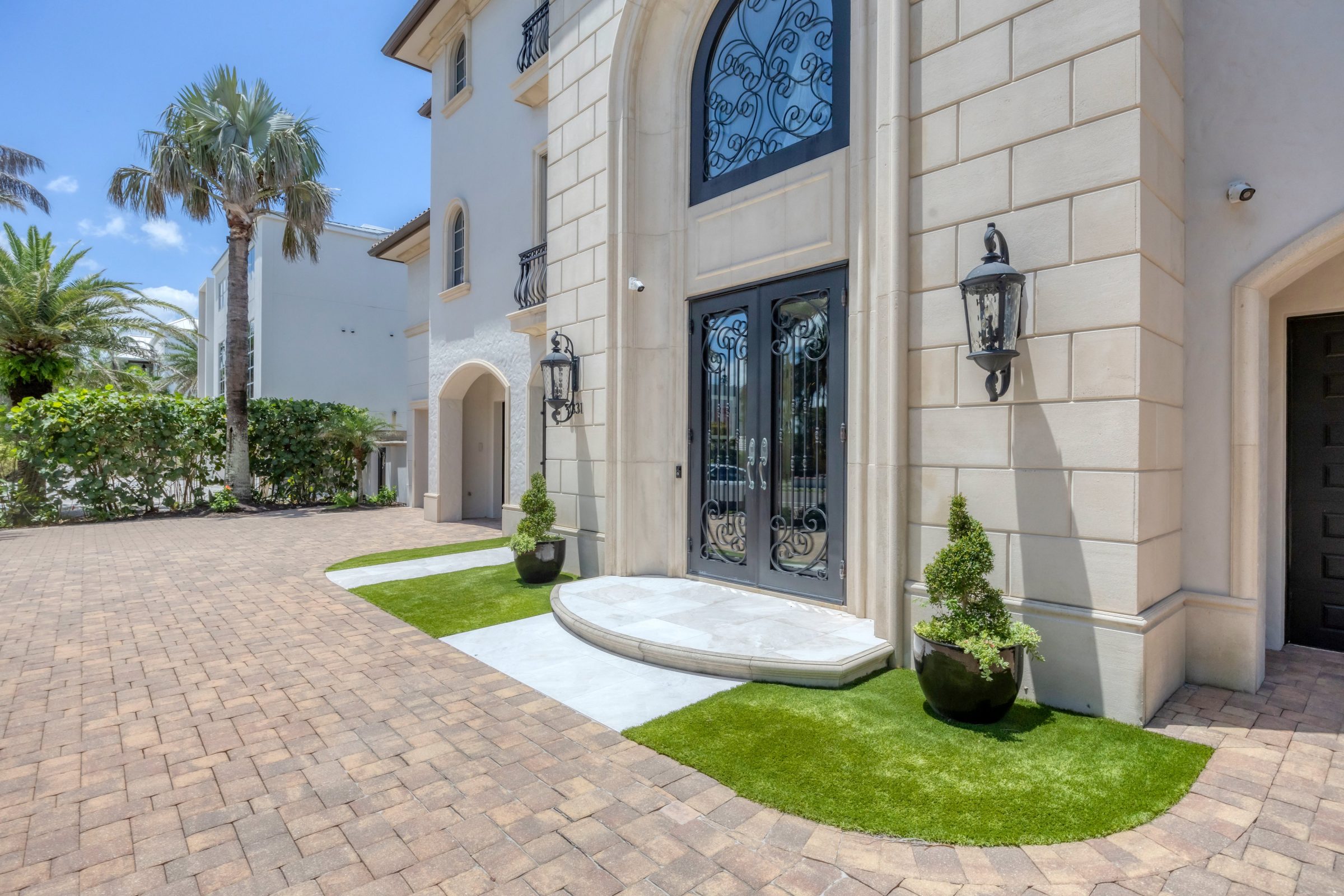
Permeable pavers are designed to manage stormwater on site. They feature wider joints filled with permeable aggregate or have porous surfaces that allow water to infiltrate through the paver. This system can reduce runoff, decrease the need for storm sewers, and improve water quality.
- Low‑Traffic Areas: Permeable pavers suit residential patios, pathways and overflow parking where heavy vehicles are rare. Their structure supports pedestrian loads while allowing infiltration.
- Environmental Compliance Projects: Many municipalities offer credits or incentives for stormwater reduction. Using permeable pavers can help meet local regulations and earn green building points.
- Water‑Sensitive Locations: Properties near lakes, rivers or wetlands benefit from permeable systems. They reduce erosion and filter pollutants before water enters sensitive ecosystems.
- Sustainable Designs: If you wish to recharge groundwater or harvest rainwater for reuse, permeable pavers direct water to underground reservoirs. Artificial turf can also be installed over permeable bases to provide a lawn that drains efficiently.
Installation of permeable pavers differs from traditional systems. The base consists of large, open‑graded aggregate that stores stormwater and supports the surface. Regular maintenance such as vacuuming the joints prevents clogging. While permeable systems cost more initially, they can offset expenses by eliminating or reducing conventional drainage infrastructure.
Should You Use Pavers Or Concrete For Your Driveway?
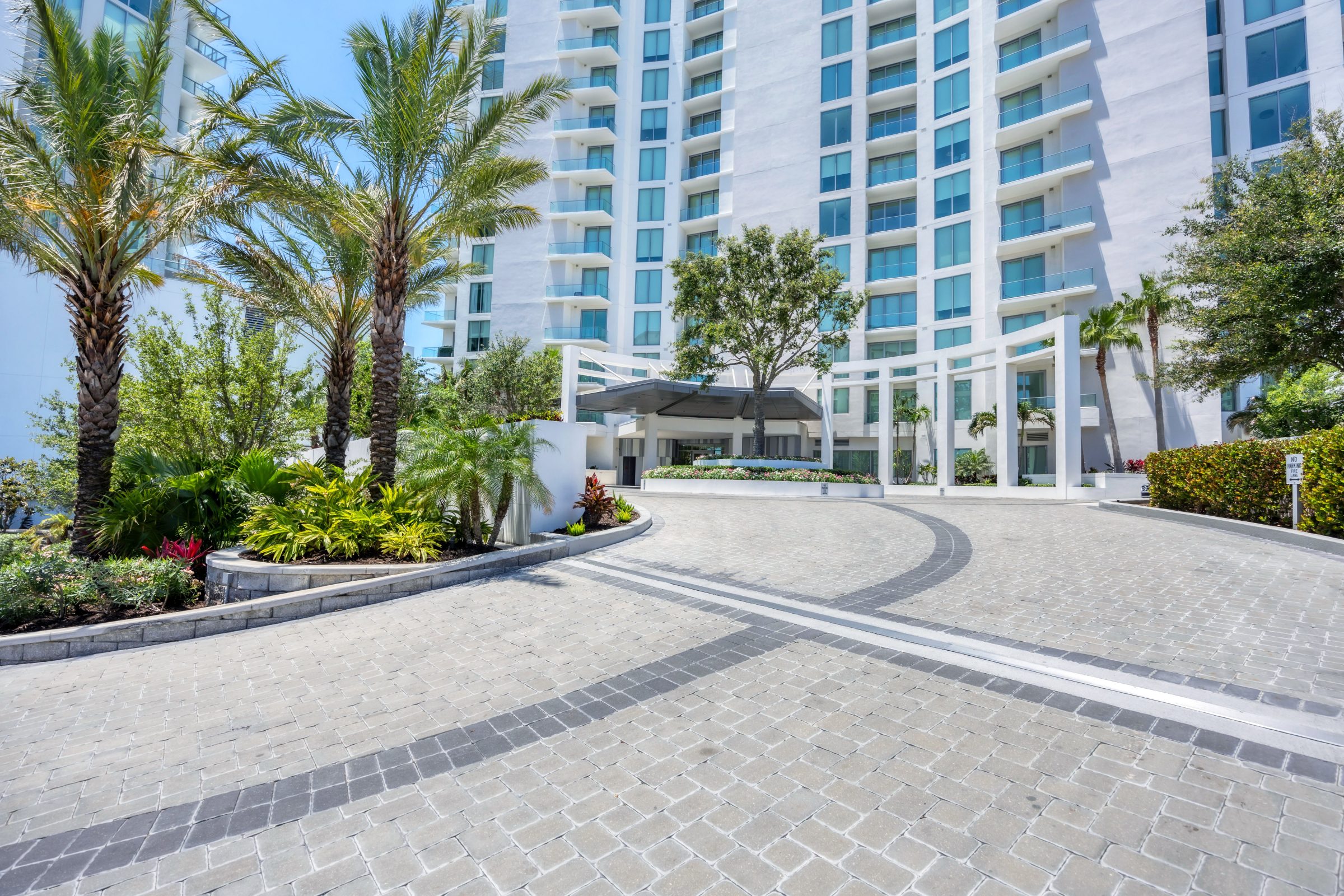
Driveway surface choice depends on long‑term performance, maintenance, and cost. Poured concrete and interlocking pavers each have strengths.
Concrete Driveways:
- Lower initial cost: Concrete is typically cheaper to install than high‑quality pavers, making it appealing for large driveways or limited budgets.
- Limited flexibility: Concrete slabs cannot flex with ground movement, so cracks are inevitable. Repairs often leave visible patches that mar the appearance.
Paver Driveways:
- High compressive strength: Interlocking pavers offer compressive strengths around 8,000 psi, double that of typical poured concrete. This makes them durable under vehicular loads.
- Low absorption: The controlled production process keeps absorption around five percent or less.
- Flexibility and repairability: Pavers can flex slightly when the soil expands or contracts. If damaged, individual units can be lifted and replaced, avoiding large cracks.
- Long‑term value: Higher initial cost is offset by longevity and easier repairs. You can also choose from a wide range of colors, textures and patterns to complement your home.
What Goes On Your Hardscape Installation Checklist?
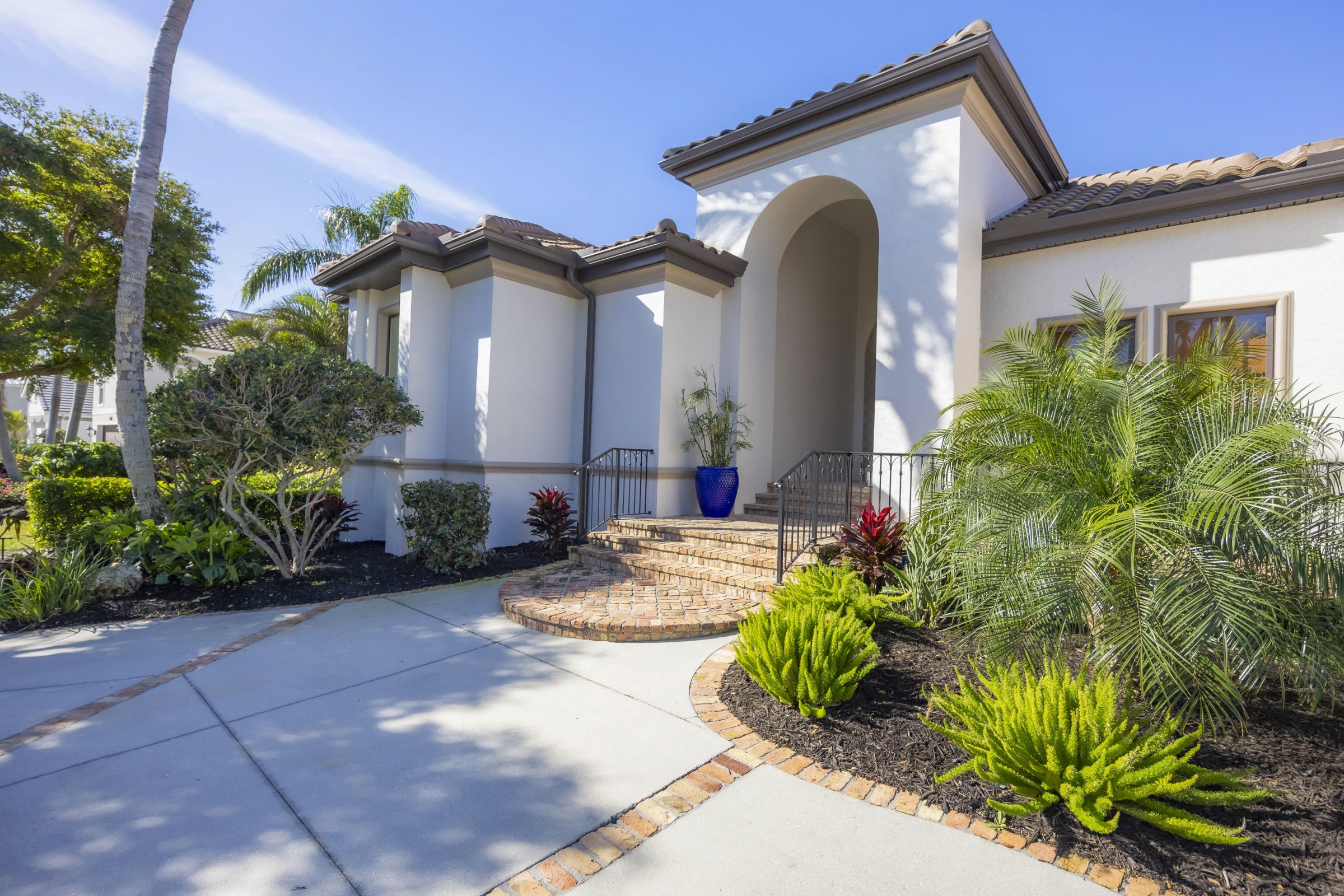
A thorough hardscape installation checklist protects your investment by ensuring each step is executed correctly.
- Layout and Measurement: Verify that your patio or driveway layout matches the plan. Use string lines and stakes to mark the perimeter and check diagonals for squareness. Accurate measurements prevent issues later.
- Excavation and Base Preparation: Excavate to the proper depth based on paver thickness, bedding sand, and base materials. For retaining walls, Western Interlock suggests digging about 12 inches to allow a 6‑inch gravel base and bury the first course. Compact base materials in lifts to achieve density.
- Cutting and Fitting: Plan where cuts will occur, especially along edges and around obstacles. Use appropriate tools to make clean cuts and minimise waste. To maintain strength, avoid having four corners meet and long continuous joints.
- Edge Restraints and Jointing: Install edge restraints like concrete curbs, plastic or metal edging, to keep pavers from spreading. After laying the surface, fill joints with polymeric sand or fine aggregate and compact the surface to lock units in place. For retaining walls, ensure a perforated pipe behind the wall to provide drainage.
- Compaction and Final Inspection: Compact pavers with a plate compactor fitted with a protective pad. Inspect slopes to ensure proper drainage and check alignment at edges. For walls, confirm that each course leans slightly into the hillside by at least one inch per foot of height.
Following a checklist reduces the chance of settling, shifting, or drainage failures. It also gives you confidence that your project will stand the test of time.
How Does Arbor Landscapes Deliver Dependable Hardscape Solutions?

When you choose Arbor Landscapes, you get more than a crew with shovels. You work with a team that values honesty, professionalism, and community. Our business has grown through referrals because we meet timelines, communicate clearly, and follow through.
You get a dedicated account manager who coordinates site preparation, material deliveries, and inspections. We discuss your preferences, budget, and site conditions, then recommend patio layout patterns and materials that age gracefully. You receive a clear materials comparison so you can choose between interlocking concrete pavers, clay brick, or natural stone. We also plan drainage, including designing slopes, swales, and inlets so water moves away from your home.
With three experienced leaders, Ausi managing maintenance, Steve overseeing construction, and Jake handling lighting and sales, your project benefits from decades of expertise. We build with respect for your property and our community. Our crews prepare proper bases, lean retaining walls into hillsides for stability, and install drainage to protect your investment. We stay on schedule and communicate progress, so you are never left wondering what happens next.
Your satisfaction continues after completion. We provide maintenance tips and remain available to address any concerns. When you work with Arbor Landscapes, you gain a partner committed to building outdoor spaces that reflect your style and withstand the elements.
If you’re ready to enhance your property with durable hardscaping, request a consultation to discuss your vision and experience the Arbor Landscapes difference.
Summary
This guide explores patio layout patterns and how they influence outdoor spaces. It compares running bond and herringbone patterns, noting that herringbone provides the strongest interlock, while running bond offers ease of installation. It outlines best paver materials such as Belgard and Tremron, highlighting interlocking concrete pavers’ high compressive strength and low absorption rates. The blog covers retaining wall design basics; compact bases, backward lean and proper drainage, and explains hardscape drainage solutions with slopes, swales and inlets. It discusses permeable pavers benefits for stormwater management and compares driveway pavers vs. concrete, showing pavers’ flexibility and repairability. An installation checklist emphasises layout accuracy, compaction, and drainage. Finally, the blog introduces Arbor Landscapes’ approach, focusing on timelines, communication, and community involvement.
Tags:
